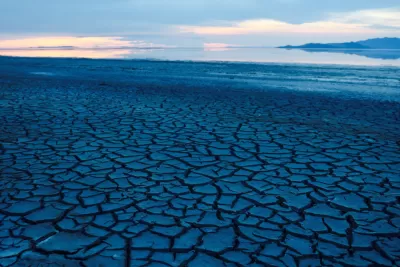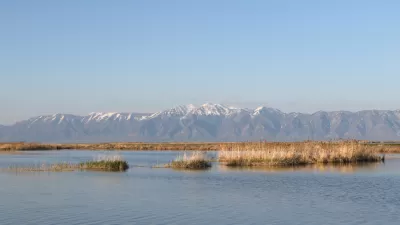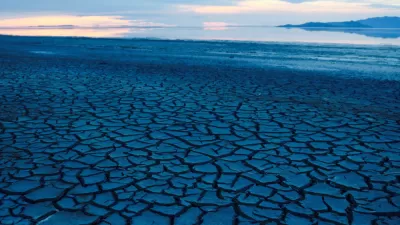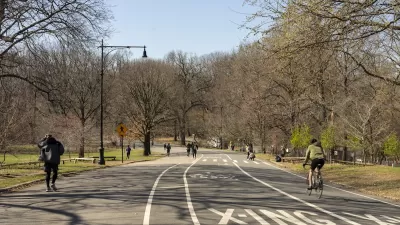Climate change and population growth are shrinking the Great Salt Lake. The environmental consequences are dire.

The Great Salt Lake has shrunk in size by two-thirds. Christopher Flavelle reports for the New York Times of the dire environmental consequences of that trend continuing until the lake is gone:
The lake’s flies and brine shrimp would die off — scientists warn it could start as soon as this summer — threatening the 10 million migratory birds that stop at the lake annually to feed on the tiny creatures. Ski conditions at the resorts above Salt Lake City, a vital source of revenue, would deteriorate. The lucrative extraction of magnesium and other minerals from the lake could stop.
There’s more:
Most alarming, the air surrounding Salt Lake City would occasionally turn poisonous. The lake bed contains high levels of arsenic and as more of it becomes exposed, wind storms carry that arsenic into the lungs of nearby residents, who make up three-quarters of Utah’s population.
Joel Ferry, a Republican state lawmaker and rancher who lives on the north side of the lake, is quoted in the article describing the prospect as an “environmental nuclear bomb.”
Flavelle also details the challenges in reversing the trend. Reversing the shrinking would “require letting more snowmelt from the mountains flow to the lake, which means less water for residents and farmers,” which would also require stemming the state and region’s quick population growth. According to the article, the dilemma raises a fundamental question about how much Americans are willing to sacrifice to avert the worst effects of climate change, not to mention live with the effects of climate change. This dilemma is, of course, not unique to Utah.
FULL STORY: As the Great Salt Lake Dries Up, Utah Faces An ‘Environmental Nuclear Bomb’

Maui's Vacation Rental Debate Turns Ugly
Verbal attacks, misinformation campaigns and fistfights plague a high-stakes debate to convert thousands of vacation rentals into long-term housing.

Planetizen Federal Action Tracker
A weekly monitor of how Trump’s orders and actions are impacting planners and planning in America.

In Urban Planning, AI Prompting Could be the New Design Thinking
Creativity has long been key to great urban design. What if we see AI as our new creative partner?

Baker Creek Pavilion: Blending Nature and Architecture in Knoxville
Knoxville’s urban wilderness planning initiative unveils the "Baker Creek Pavilion" to increase the city's access to green spaces.

Pedestrian Deaths Drop, Remain Twice as High as in 2009
Fatalities declined by 4 percent in 2024, but the U.S. is still nowhere close to ‘Vision Zero.’

King County Supportive Housing Program Offers Hope for Unhoused Residents
The county is taking a ‘Housing First’ approach that prioritizes getting people into housing, then offering wraparound supportive services.
Urban Design for Planners 1: Software Tools
This six-course series explores essential urban design concepts using open source software and equips planners with the tools they need to participate fully in the urban design process.
Planning for Universal Design
Learn the tools for implementing Universal Design in planning regulations.
planning NEXT
Appalachian Highlands Housing Partners
Mpact (founded as Rail~Volution)
City of Camden Redevelopment Agency
City of Astoria
City of Portland
City of Laramie





























